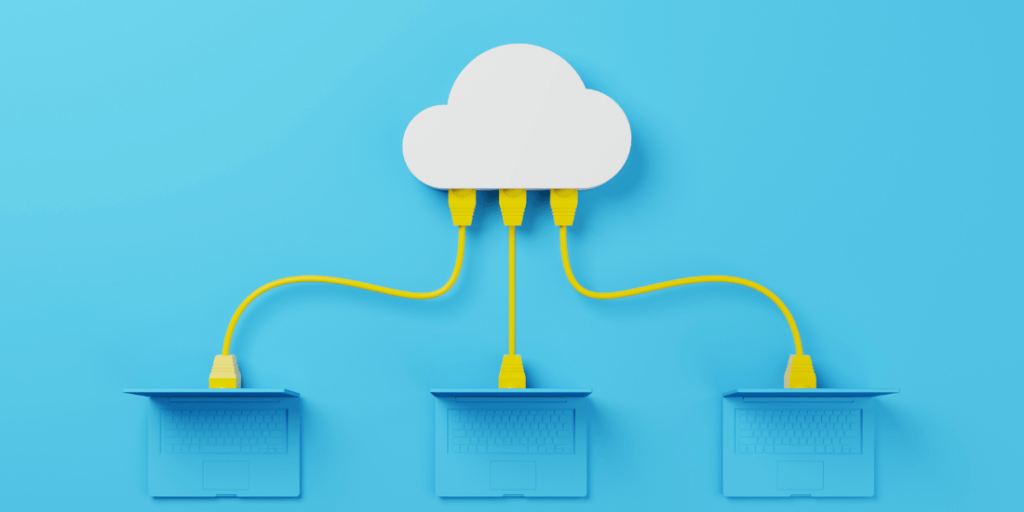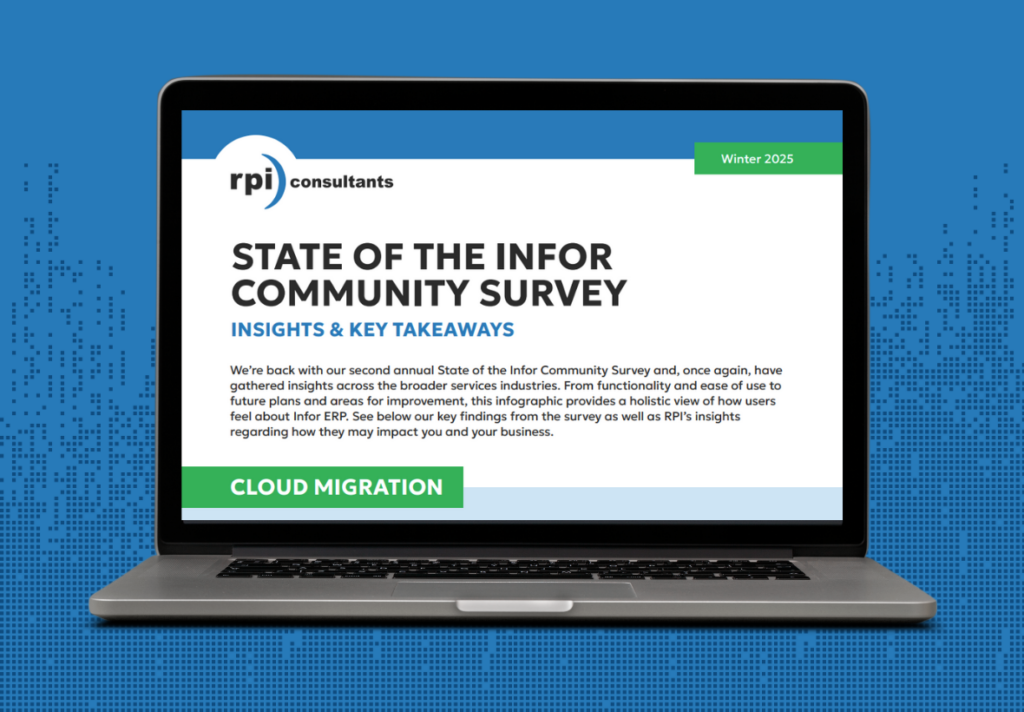You’ve successfully launched on CloudSuite—congratulations! Now what?
It’s a question often pushed aside until after the excitement of go-live settles. Understandably too, as your focus has been on getting everything ready for the big switch. But now that you’re live, it’s time to shift gears and think about what comes next.
In this post, we’ll explore what organizations can expect post go-live and how the time after can best be utilized to enhance the system performance while simultaneously improving the user experience for your teams. Afterall, Infor CloudSuite is a continuous journey of improvement—not a destination.
Let’s explore how you can keep the momentum going.
Life Post Go-Live
Make no mistake, the feelings surrounding an Infor CloudSuite implementation are exciting. These projects, often spanning upwards of 12 months, require a heroic effort from many parts of your organization, and oftentimes, third-party teams.
While the occasion is worth celebrating, especially when the cutover goes off without any major issues, it’s far from the end. It’s actually the beginning of a new phase—a phase that can help your organization realize the many benefits of CloudSuite.
Life post go-live is an opportunity to stabilize your system, fine tune applications, get teams caught up to speed on functionality, and a whole lot more. Let’s first look at post go-live stability.
Post Go-Live Stability
It’s true that a cloud-based ERP system offers many quality-of-life improvements and overall efficiency, but chances are, you’re not experiencing those benefits just yet. Why? Because the system is new, and it hasn’t had a chance to cycle through your standard business processes and therefore isn’t running at optimal performance just yet.
For comparison, think back to your legacy on-premise system. Your organization had decades of fine-tuning it to perform the way your organization needed it to. Now, CloudSuite won’t take nearly as long to get to that level of performance, but it’s going to take some time and a closer look at how things are operating.
The first thing your organization should focus on after go-live is stabilizing the system.
What is Stabilization?
The stabilization period follows cutover and is a time to identify and address any unexpected issues across the system. For example, there may be compatibility issues between third-party solutions and CloudSuite’s standard functionality.
System stability is all about ensuring everything is working properly. It’s a period that happens after go-live and prior to introducing new enhancements, customizations, and integrations. This is when your teams should work to identify and resolve any system issues, while also monitoring performance to optimize usage.
Addressing Post Go-Live Challenges
After successfully going live on CloudSuite, organizations often find themselves navigating a landscape marked by post-implementation challenges. Two prominent areas to focus on include reporting and automation.
Reporting disconnects: A common issue post go-live involves reporting, which is often sidelined during the implementation. It might feel like a good idea to recreate reports from the old system, but that would be unwise as reports won’t deliver the same outcomes as they did in the legacy ERP.
When getting started with Infor CloudSuite reporting, particularly financial reporting, it’s advisable to understand what Infor’s delivered Report Catalog and analytics can achieve. Moreover, you’ll want to begin identifying and collecting new data for reporting and analytics.
Some examples of what to ask yourself throughout this process include the following: What key performance indicators (KPIs) are most relevant to the organization’s goals and objectives? What data points should be collected and analyzed to track these KPIs and uncover trends? How can this data be visualized and presented to stakeholders for better decision-making?
Archive what you can from the legacy ERP and start with only the processes and data that comes in after you are live on the new system. Your initial reports and analytics may not give the actionable information that is needed. Use the time after go-live to establish processes to track relevant data to inform your reports and analytics to uncover the root cause of issues.
Automation inefficiencies: Another area that often requires attention relates to interface automation. It’s true you prepared for this during testing cycles leading up to go-live, however, once in a live production environment, it’s common for issues to surface when attempting to replicate legacy system functionality. And as a result, corrections and adjustments become necessary.
The document storage process, for example, is typically not as efficient as it could be and requires fine tuning. The reason? In many cases, the existing legacy processes and systems lacked the required capabilities, security & integration with document management systems.
Revisiting Secondary Priorities
Beyond system stabilization, the post-go-live phase provides organizations with the chance to revisit priorities that might have been tabled ahead of the implementation. Every day before the transition, your organization had to stick closely to the agreed-upon project budget and timeline, focusing on the essential tasks outlined in the RICE inventory and prioritized using the MoSCow method .
With the must-haves, major requirements, and core systems operating, now is the time to begin unlocking new functionality to create and update processes that were not able to be managed within the legacy system.
These should-haves, could-haves, and nice-to-haves are the initiatives that really enhance the CloudSuite experience. Below are some priorities to focus on now that you’re live.
Roll out training & continuous improvement programs: “You don’t know what you don’t know” is a mantra that holds weight in the world of Cloud-based ERPs. To help your teams realize all that CloudSuite has to offer, introduce both functional and IT training programs. RPI Bootcamps, for example, provide users with hands-on instruction for strengthening skills in various CloudSuite applications. Those learnings can then be applied to your organization’s environment and will ultimately help teams carry out their jobs more efficiently.
Another prevalent theme revolves around the idea of continuous improvement. CloudSuite, being the dynamic platform that it is, evolves and scales alongside your business. The best way to ensure the system is helping your organization achieve its business goals is to develop a continuous improvement team. These teams are responsible for developing a method for streamlining processes as well as acting on feedback collected from your business users, but more on that below.
Implement customizations & integrations: With the addition of the new Portal OS interface, users have the ability to tailor their CloudSuite experiences. Post go-live presents a great opportunity for users to customize their experience.
Encourage teams to configure their dashboards, widgets, and themes using the provided options, and specify integration needs for their relevant applications. Bringing in additional data from these other systems can save time and impact decision-making.
Also use this time to set up integrations with other systems to streamline workflows and improve overall efficiency. This includes communication and collaboration tools like Teams and Slack. It can also involve more technical configurations, like connecting third-party AP automation solutions to the core CloudSuite FSM system.
Clean up & archive data: As the saying goes, “garbage in, garbage out.” Use the time post go-live to focus on your data. While it may be desirable to do so, carrying over years of legacy data into the new system is not advisable.
Why, you ask? For one, converting data into a system has to go through heavy transformation. The old transactional data must conform to new structures/processes and that can take your teams a lot of time. Moreover, older transactions may not contextually map into the new system and thus may not model the transactions the way they actually happened. There are also considerable data quality issues that may arise from this exercise.
Instead of carrying over all the legacy information, conduct a thorough review of your data and address any discrepancies that may have surfaced post go-live. This is a great time to implement a data governance policy too, as this will help maintain data quality and accuracy in the long term. The general rule of thumb, and for compliance purposes, is to keep data that is less than seven years old.
Optimize applications: Infor CloudSuite is known for its modular, configurable experience–it’s one of the reasons the price of the system varies so greatly, but beyond that, it means taking advantage of various applications across the Financial Management, Supply Chain Management, HR Talent, Payroll, and WFM functional areas. And post go-live presents an opportunity to optimize said applications.
From an SCM perspective, contract management, strategic sourcing, and supplier portal are significant applications to focus on. While these modules may be implemented independently, they work best when they’re all installed.
So, ahead of go-live, it’s possible that maybe one or two of these applications were prioritized. During this phase, consider expanding on the functional area to strengthen your overall SCM practice.
Similarly, there are many opportunities to enhance Global HR post go-live. For instance, you can focus on enhancing employee positions. By prioritizing qualifications for important or high turnover roles and importing employee qualifications from an ATS or Learning Management System, you can establish an internal pool of candidates for succession and difficult-to-fill positions.
Additionally, this process can help track and alert when credentials expire, allowing your business to restrict access to the time entry system if employees are non-compliant.
Create a feedback loop: While the major hurdle of cutover has passed, organizations must recognize that there is always room for refinement and optimization. And the best way to fine tune the system is to solicit feedback from your core userbase.
Implement a system for collecting and acting on user feedback. The system should be accessible across all the functional areas within CloudSuite. The continuous improvement team mentioned above should be responsible for reviewing and prioritizing the suggestions provided by your workforce.
The sooner a process is put in place, the better, as these recommendations will enhance CloudSuite and ensure that the system stays aligned with evolving business needs. It’s imperative that this happens as failing to address individual concerns early on can lead to burnout, low levels of adoption, and inefficient system use.
Get Help with Post Go-Live Support
Post-go-live success involves continuous training, refined reporting, and maximizing the potential of CloudSuite’s features for sustained business success as well as focusing on initiatives that were tabled ahead of go-live.
While the go-live moment is a significant milestone, it’s essential to recognize that it marks the beginning of an ongoing process of improvement and optimization.
And the reality is that your teams are probably exhausted from essentially working two full-time jobs leading up to go-live.
The optimization, stabilization, and strengthening initiatives that present themselves during the post go-live phase don’t need to be tackled all at once and should be introduced as resources allow.
This is where we can help. RPI Consultants has more than 25 years’ experience helping organizations implement and optimize ERP systems. We can provide staff augmentation services to fill the resource gap as well as create a project timeline for rolling out the most important initiatives.
By focusing on stability, reassessing priorities, and embracing ongoing improvement, we can help you navigate a smooth post-go-live journey.
If your organization has gone live on CloudSuite, and needs assistance stabilizing the system, optimizing applications, rolling out new policies, or anything else, contact RPI.
To learn more about RPI’s post go-live optimization services, download our Post-Go Live Assessment below.



